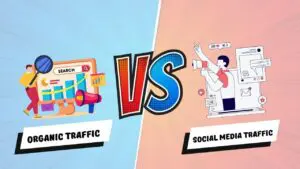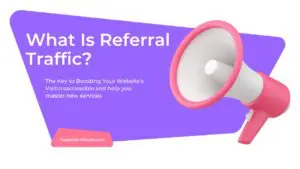3X Your Organic Traffic: Step-by-Step Guide (Triple Your Organic Traffic) Increasing organic traffic is essential for the growth and success of your online presence.
Here’s a step-by-step guide to help you triple your organic traffic effectively, featuring 18 detailed strategies.
Contents
- 1 1. Conduct Thorough Keyword Research
- 2 2. Optimize On-Page SEO
- 3 3. Create High-Quality Content
- 4 4. Improve Site Speed and Mobile Friendliness
- 5 5. Build Quality Backlinks
- 6 6. Leverage Social Media
- 7 7. Optimize for SERPs
- 8 8. Drive Referral Traffic
- 9 9. Utilize Email Marketing
- 10 10. Engage in Content Marketing
- 11 11. Implement Schema Markup
- 12 12. Focus on User Experience (UX)
- 13 13. Perform Regular SEO Audits
- 14 14. Enhance Local SEO
- 15 15. Create Engaging Multimedia Content
- 16 16. Participate in Online Communities
- 17 17. Optimize for Voice Search
- 18 18. Stay Updated with SEO Trends
- 19 19. Buy Traffic
- 20 Conclusion
1. Conduct Thorough Keyword Research
Keyword research is the foundation of any successful SEO strategy. Use tools like Google Keyword Planner, Ahrefs, or SEMrush to find relevant keywords with high search volumes and low competition. Focus on long-tail keywords, as they are often less competitive and more specific, making it easier to rank.
2. Optimize On-Page SEO
On-page SEO involves optimizing individual pages to rank higher and earn more relevant traffic. Here are some key elements:
- Title Tags: Include your primary keyword.
- Meta Descriptions: Write compelling descriptions with keywords.
- Headers: Use H1, H2, and H3 tags with keywords.
- Content: Ensure your content is high-quality, informative, and includes keywords naturally.
- URL Structure: Keep URLs short and keyword-rich.
- Internal Linking: Link to other relevant pages on your website.
3. Create High-Quality Content
Content is king in SEO. Create valuable, informative, and engaging content that addresses your audience’s needs. Regularly update your blog with fresh content and consider various formats like articles, videos, infographics, and podcasts. High-quality content attracts backlinks, which boosts your site’s authority and ranking.
4. Improve Site Speed and Mobile Friendliness
Google prioritizes websites that load quickly and are mobile-friendly. Use tools like Google PageSpeed Insights and Mobile-Friendly Test to analyze and improve your site’s performance. Optimize images, leverage browser caching, and ensure your site is responsive on all devices.
5. Build Quality Backlinks
Backlinks are crucial for SEO. They signal to search engines that your content is valuable and trustworthy. Reach out to industry influencers, write guest posts, and engage in content marketing to earn high-quality backlinks. Tools like Ahrefs and Moz can help you identify potential backlink opportunities.
6. Leverage Social Media
Social media can drive significant traffic to your website. Share your content on platforms like Facebook, Twitter, LinkedIn, GitHub and Instagram. Engage with your audience by responding to comments and participating in relevant groups and discussions. Use social media to build relationships and encourage shares and backlinks.
7. Optimize for SERPs
Search Engine Results Pages (SERPs) are where your site will appear in response to a search query. To optimize for SERPs, ensure your content is not only SEO-friendly but also user-friendly. Use rich snippets, structured data, and featured snippets to stand out. Engage in Local SEO if your business targets a specific geographic area.
8. Drive Referral Traffic
Referral traffic comes from visitors who click on links from other websites. To drive referral traffic, get your website featured on high-traffic sites within your niche. Write guest posts, collaborate with influencers, and participate in forums and online communities. Quality referral traffic can improve your site’s authority and drive targeted visitors.
9. Utilize Email Marketing
Build an email list and regularly send out newsletters with valuable content, updates, and promotions. Email marketing helps keep your audience engaged and drives repeat traffic to your site. Ensure your emails are optimized for both desktop and mobile viewing.
10. Engage in Content Marketing
Content marketing involves creating and distributing valuable content to attract and engage your target audience. Use blogs, eBooks, whitepapers, and case studies to provide value and establish your authority in your industry. Share this content across multiple platforms to reach a broader audience.
11. Implement Schema Markup
Schema markup is essentially a code that you add to your website to help search engines understand the content on your page. It’s like providing a structured roadmap for search engines to follow.
Here’s how it works:
- Clearer context: Schema markup helps search engines understand the specific content on your page, such as whether it’s a product, article, or event.
- Rich snippets: This improved understanding can lead to richer search results, including information like ratings, prices, or event details directly in the search results.
- Increased click-through rates: Rich snippets make your listing more visually appealing, increasing the likelihood of users clicking on your link.
- Improved search rankings: While not a direct ranking factor, schema markup can indirectly influence rankings by improving user experience and click-through rates.
In essence, schema markup acts as a translator between your website and search engines, making it easier for them to understand and present your content effectively.
12. Focus on User Experience (UX)
A great user experience encourages visitors to stay longer on your site and explore more pages. Ensure your website is easy to navigate, visually appealing, and provides valuable content. Optimize page load times, use clear calls-to-action, and make sure your site is accessible to all users.
13. Perform Regular SEO Audits
Conduct regular SEO audits to identify and fix any issues that may be affecting your site’s performance. Use tools like Screaming Frog, SEMrush, or Moz to audit your site’s technical aspects, on-page SEO, and backlink profile. Regular audits help you stay on top of any potential problems and continuously improve your SEO efforts.
14. Enhance Local SEO
If you run a local business, optimizing for local search is crucial. Claim your Google My Business listing, use local keywords, and get reviews from satisfied customers. Local SEO helps you attract visitors from your specific geographic area, driving targeted traffic to your site.
15. Create Engaging Multimedia Content
Multimedia content like videos, infographics, and podcasts can significantly enhance user engagement. Create informative and entertaining videos, visually appealing infographics, and insightful podcasts to cater to different audience preferences. Share these across various platforms to increase your reach.
16. Participate in Online Communities
Engage with online communities and forums related to your industry. Provide valuable insights, answer questions, and share your content when relevant. Participating in these communities can drive targeted traffic to your site and help establish your authority in your niche.
17. Optimize for Voice Search
With the rise of voice-activated devices, optimizing for voice search is becoming increasingly important. Use conversational keywords and phrases, provide concise and clear answers to common questions, and ensure your content is mobile-friendly to capture voice search traffic.
18. Stay Updated with SEO Trends
SEO is constantly evolving, so staying updated with the latest trends and algorithm changes is crucial. Follow industry blogs, attend webinars, and participate in SEO forums to keep your knowledge current. Adapting to new trends helps you stay ahead of the competition and maintain a strong online presence.
19. Buy Traffic
Accelerate your website’s growth with targeted traffic. Increase visibility and reach potential customers by acquiring high-quality visitors from top search engines. A strategic approach to buying traffic can complement your organic SEO efforts for faster results.
Purchasing organic traffic through reputable sources can provide an immediate boost to your website. Ensure you buy traffic from providers who deliver high-quality, targeted visitors from top search engines like Google, Bing, and Yahoo. You can also consider buying traffic through ads and PPC campaigns to complement your organic efforts and achieve faster results. This strategy helps enhance visibility and drive more relevant traffic to your site.
Conclusion
Tripling your organic traffic requires a strategic approach and consistent effort. By conducting thorough keyword research, optimizing on-page SEO, creating high-quality content, improving site speed and mobile-friendliness, building quality backlinks, leveraging social media, optimizing for SERPs, driving referral traffic, and implementing the additional strategies outlined above, you can achieve significant growth in your organic traffic. Start implementing these steps today and watch your traffic soar!
Maximize Your Online Visibility: By leveraging these strategies, you’ll not only increase your organic search traffic but also enhance your website’s overall visibility and authority in your niche. Focus on providing value, engaging with your audience, and continually optimizing your efforts to achieve sustainable growth and success. organic search traffic to give your site an immediate boost and attract high-quality, targeted visitors.






